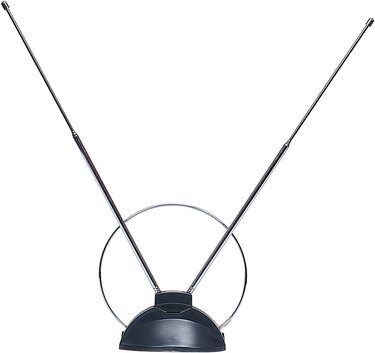
TV antenna amplifiers are used to boost a weak broadcast or cable TV signal across a coaxial cable. Antenna amplifiers send a low-level electrical signal through the the coaxial cable leading to your TV. An antenna amplifier may connected as a pre-amp on the main external antenna or in conjunction with a coaxial cable splitter. You may use two or more TV amplifiers to boost the signal in your home.
Digital Television Broadcasts
Video of the Day
Beginning on June 12, 2009, all analog U.S. television broadcasts were replaced with digital tv broadcasts. DTV broadcasts provide a higher-quality picture than analog broadcasts and combine multiple TV channels into the space used to house one analog broadcast. Digital TV broadcasts require a digital TV converter when using an over-the-air antenna.
Video of the Day
High-Definition and Digital Amplifiers
Analog TV signals can be transmitted through coaxial cable and splitters ranging up to 900 megahertz. Since the DTV conversion, digital TV signals operate on signals ranging between 900-2,150 Mhz. Before attaching an amplifier, verify that the coaxial cable, splitters and amplifiers can boost a signal between the 900-2,150 Mhz range.
Connecting Multiple Amplifiers
Each time a cable connection is split, the strength of the cable connection decreases by up to 3 decibels. Multi-splitters will identify the level of signal loss at each output connect after a split. You can connect an amplifier to each output from a splitter to boost the signal to each of the corresponding TV sets connected to the splitter.
Problems with Multiple Amps
The TV signal amplifier will boost the TV signal to each of your TVs, but will also increase the noise on your line if the signal is amplified too much. Increased electrical noise on your line may cause static distortion, duplicate or "ghost" images and audio problems. A cable amplifier should only be used once per-split to avoid these errors.